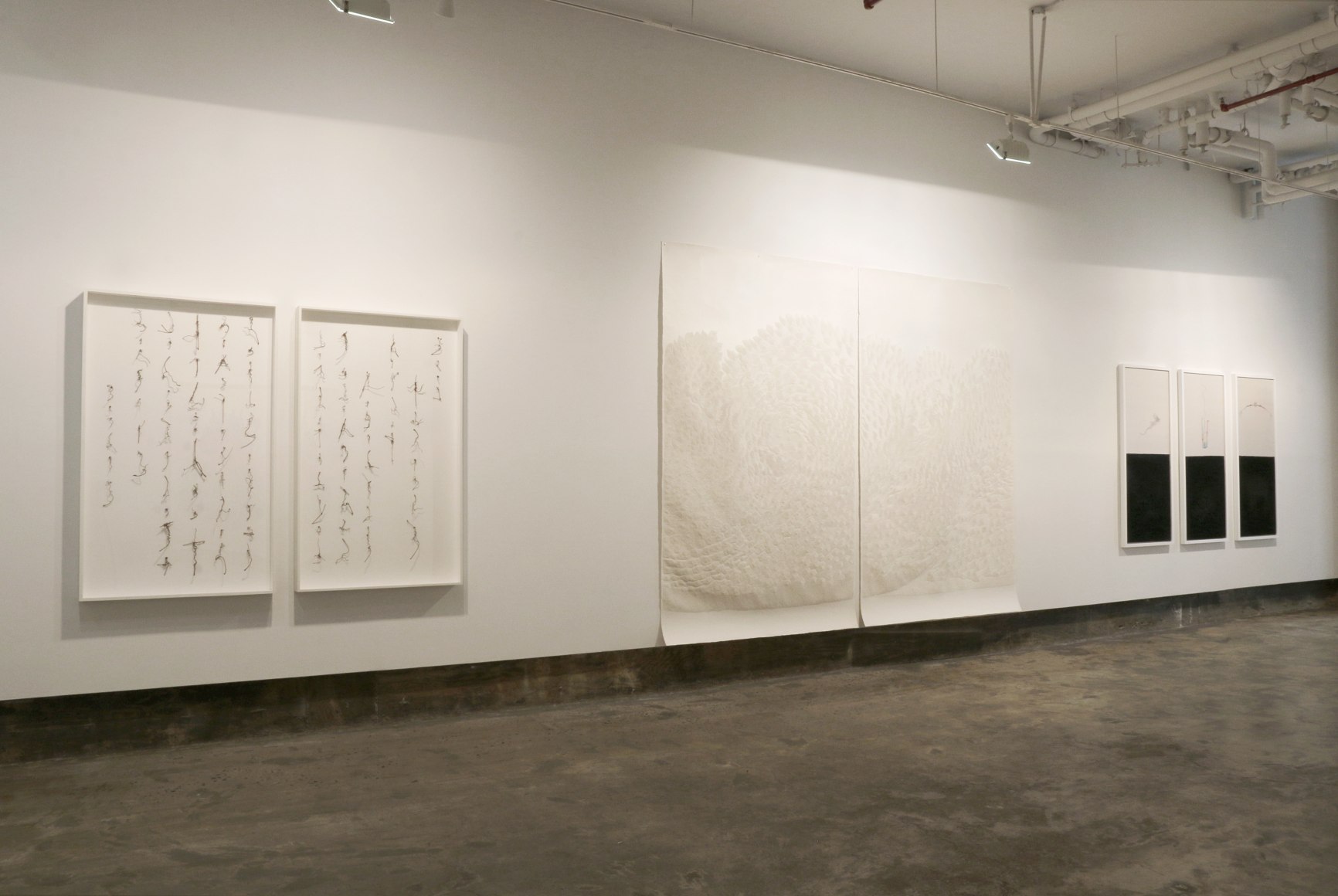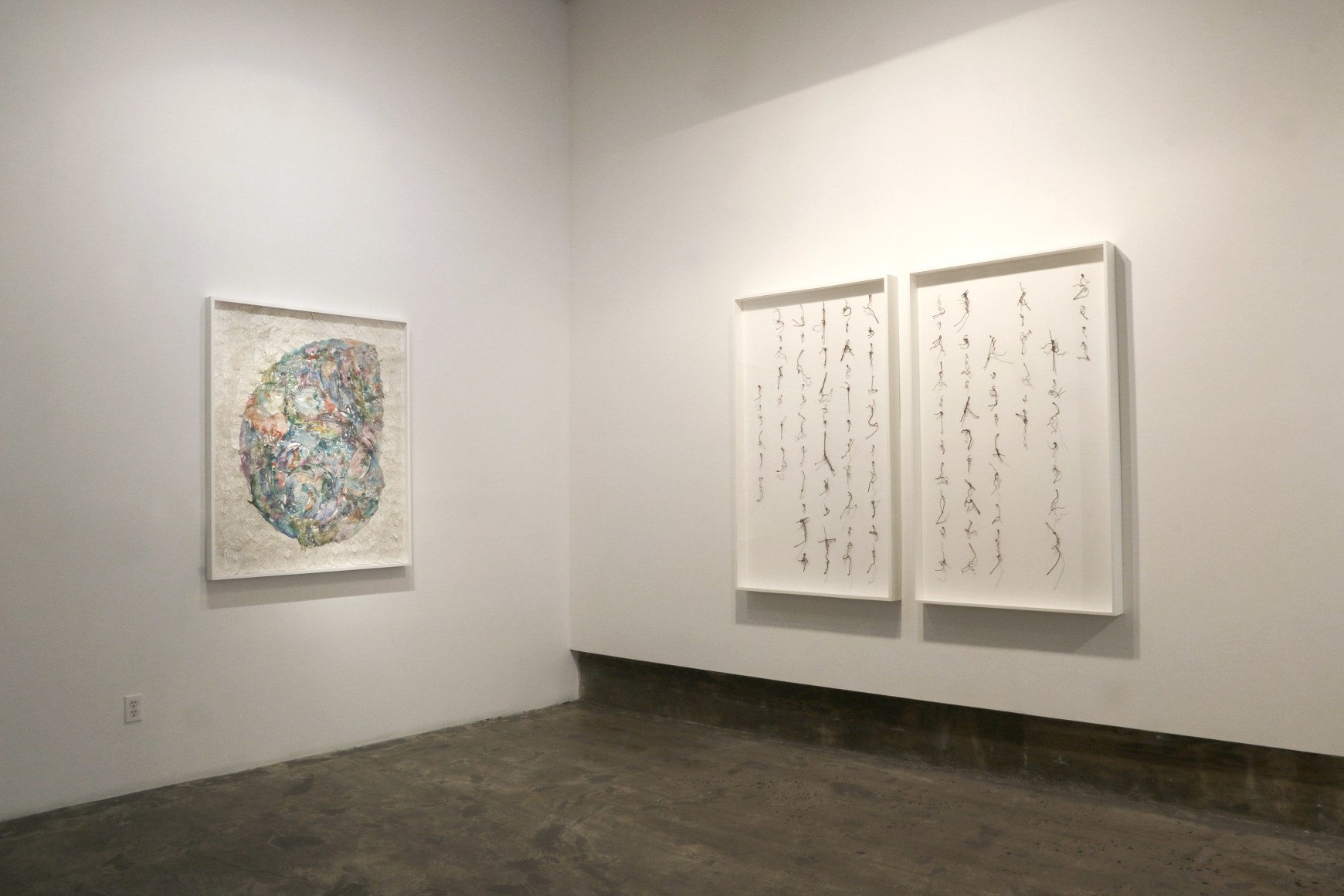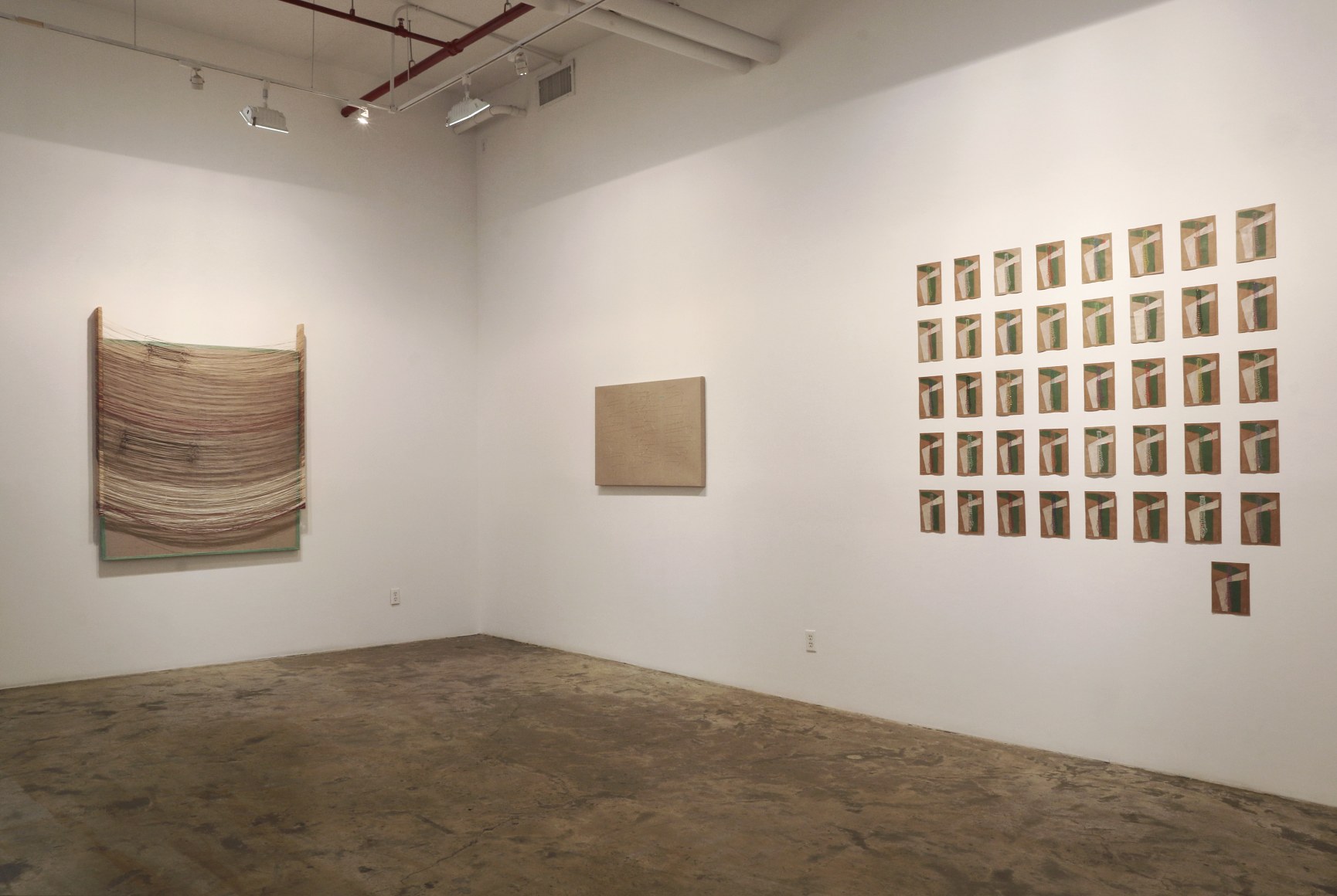Chambers Fine Art is pleased to announce the opening on May 3 of Needlepoint, an exhibition featuring five artists whose work involves the unorthodox act of piercing the support on which they work, either through embroidery, pinpricks, or stitching.
Hong Lei gained early recognition in the 1990s, a crucial decade in the development of contemporary Chinese art. His three vertical paintings are part of a group of fifteen, named after the traditional Chinese agricultural calendar, in which he superimposes white silk panels embroidered with symbolic plants above dark-toned images of gardens. Always noted for their technical finesse, the works succeed in fusing separate aspects of his previous practices – painting, photography and embroidery – into a series of hauntingly hybrid works.
Cui Fei’s work is inspired by nature, her favored materials being natural materials such as vines, twigs and tendrils that she gathers herself. It was after her move to the US that she began her Manuscript of Nature series, when the chance discovery of some dried grape tendrils that had fallen off an installation made from grape vines led to a transformation in her process. The similarity that she detected between the sinuous form of the tendrils and Chinese calligraphy in the grass style was the first step in what was to become an ongoing investigation of the relationship between human beings and nature. Her use of pins to hold the tendrils in place is achieved through a painstaking process of trial and error to create the perfect balance of securing the materials while maintaining the minimal amount of shadow and physical disturbance to the backing board. The pins and the shadows they cast become part of the calligraphic imagery of the series.
While Cui Fei responds to the natural world, Lucy Liu’s Totem series centers on human relationships, and features a repeated image of the spine, delicately stitched into raw canvas. Strings stretch outward from the embroidered spine, symbolizing the artist’s relationships as they intertwine, connect, or are cut off. The spine imagery appears once again in 41, a series of stitched and collaged works on paper. The series is an autobiographical account of Liu’s life, with each piece representing one year of her life. The date is delicately stitched into each piece, and small points of color within the collaged paper resemble dots on a map, perhaps marking significant points in Liu’s life.
Wu Jian’an and Fu Xiaotong are both well-known for the intense and inventive manipulation of their chosen mediums. For Wu Jian’an, his continued development of the traditional art of Chinese paper-cut has led to increasingly intricate works of art. The two works in this exhibition were recently shown at the Milwaukee Museum of Art, and are from a series of paper-cuts that are first laser cut, then hand-dyed and sealed in wax, and finally layered into a composition that is hand-stitched to a large piece of paper. The individual units are derived from his large-scale installation Seven Layered Shell, each component based on characters from traditional Chinese myths.
In contrast to Wu Jian’an’s multi-step process, Fu Xiaotong manipulates her medium of Xuan paper using only the singular repeated act of piercing the paper’s surface using an awl, a needle used in traditional book-making. She is able to achieve a three-dimensional relief effect by adjusting the direction of her pinpricks, and in her latest work employs a circular pattern that a creates an even more sculptural effect, with areas of the paper protruding from the surface. These undulating surfaces evoke a multitude of associations, organic, cellular, human or animal skin, coral reefs or breast-like forms that recall an important aspect of the work of Louise Bourgeois.



